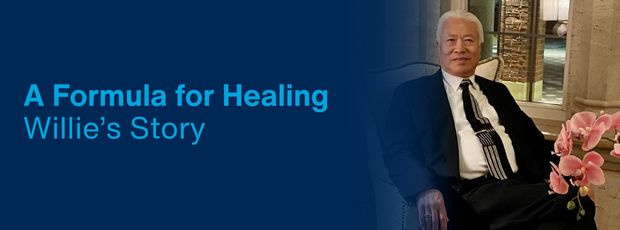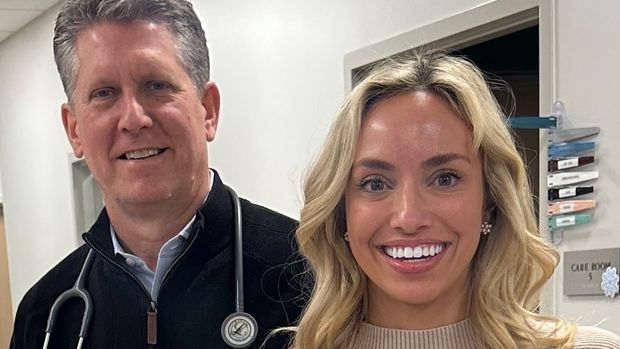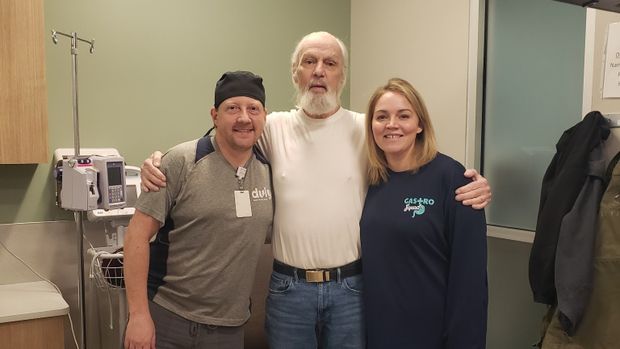In his decades as a chemist, Willie spent his career analyzing compounds, balancing risks, and ensuring every formula was just right. So when faced with a serious health concern, he applied that same analytical mindset to his own care. As he explored his options, one thing became clear — Duly Health and Care was where he needed to be.
A Journey of Care
For more than 25 years, Willie has been a patient of Michael Paik, MD, FACS, a Urologist at Duly, receiving treatment for an enlarged prostate. However, during a routine checkup, a concerning sign prompted further testing.
“My primary doctor initially found a small amount of blood in my urine, so we ran tests. Everything pointed to prostate issues, and my doctor reassured me that there was no immediate cause for concern. I continued following up with him every year,” Willie explained.
Over time, his symptoms worsened. Dr. Paik recommended additional testing, leading to an ultrasound that revealed cysts on both kidneys. Further testing, including an MRI, uncovered a likely cancerous tumor on Willie’s left kidney.
Surgery was the traditional treatment option, but Willie wanted to explore less invasive alternatives before committing to a major procedure.
“I know that once you go through surgery, there’s no going back. I wanted to explore every option and ensure I was making the right decision for my health in the long run,” Willie said.
Exploring Less Invasive Options
After discussing his options with Dr. Paik, Willie was referred to Danial Jilani, MD, MPH, an Interventional Radiologist at Duly, who took the time to thoroughly review his treatment choices.
“There are several different methods of ablation for tumors, including radiofrequency, microwave, and cryoablation (freezing),” explained Dr. Jilani. “Each method has its benefits depending on the type, size, and location of the tumor.”
For Willie, Dr. Jilani recommended microwave ablation (MWA)—a minimally invasive procedure that uses heat to precisely target and destroy tumors while minimizing damage to surrounding healthy tissue.
During the procedure, a thin, long needle was inserted through a small hole in the skin, guided by imaging techniques such as CT or ultrasound. Once in place, the needle emitted microwave energy to heat and destroy the tumor within a controlled zone.
“The goal is to concentrate the heat directly on the tumor while aiming to minimize the amount injury to the healthy tissue around the tumor,” Dr. Jilani said. “Given that everything is done through a pinhole through the skin without a major incision microwave ablation can be effective for small and hard to reach tumors and avoids a major operation while aiming for a curative effect.”
Since MWA is minimally invasive, it also comes with quicker recovery times and less pain compared to traditional surgery. Additionally, it can be a safer option for older patients or those with other health concerns, like chronic kidney disease. Because the procedure doesn’t require general anesthesia, it eliminates the risks associated with cardiopulmonary complications.
“Ablation can treat tumors very quickly compared to chemotherapy or radiation and is associated with fewer side effects,” Dr. Jilani said. “According to interventional radiology literature, microwave ablation also has lower costs, complication rates, and shorter procedure durations compared to partial nephrectomy.”
Willie underwent the procedure and was able to go home the same day. “The whole team was incredible. The needle site healed quickly, and I was able to shower the next day,” he added.
Positive Results
Following the procedure, Willie underwent another MRI with contrast. Dr. Jilani thoroughly reviewed the results with him, answering all his questions. The scan confirmed the procedure was successful.
“The team took the time to explain the results to me, and it was reassuring to see the progress,” Willie said. “I wasn’t feeling any more pain or issues, so I knew the treatment had been effective. I trusted the doctors and their approach, and I’m confident moving forward.”
Confidence in His Care Team
Reflecting on his journey, Willie emphasized how the experience reinforced his trust in the Duly team. From his long-standing relationship with Dr. Paik to the cutting-edge care provided by Dr. Jilani, he always felt he was in the right place with the right people guiding his care.
“Dr. Paik and Dr. Jilani worked together seamlessly. I felt very comfortable knowing that they were collaborating on my care. The doctors and their teams always kept me informed and on track,” he said.
For Willie, this experience was a reminder of the importance of having a care team you trust — one that guides your health with expertise, compassion, and precision.
“I can’t say enough about how well I’ve been treated,” he shared. “When I visit the office, it feels like visiting family. Everyone is so welcoming and easygoing, from the nurses to the doctors. I trust them completely with my care.”
Health Topics:




